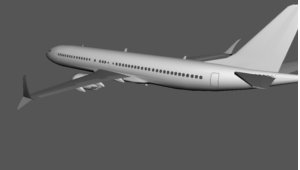

FlightGear models the continuously evolving life-cycle of phenomena on various scales, driven by interaction of fluid with terrain. FlightGear is able to model different surface characteristics such as heating or cooling, and the exchange of heat and moisture with the atmosphere depending on factors like windflow or dew point. Craft also experience varying gravitational force based on the 3d shape of the potential well and the non-spherical shape of the Earth.Ītmospheric & Environmental Physics įlightGear can simulate the atmosphere ranging from energy inputs/outputs to the system, like energy from the sun or volcanic sources, through to fluid flow on various scales and changes of state. Forces experienced at any point along a flight path, therefore, are the result of complicated atmospheric processes on varying spatial scales, and complex flow along the craft's surface. The aircraft surface interaction works with the same dynamics, but on a limited range of scales. The atmosphere-terrain boundary interaction follows fluid dynamics, just with processes on hugely varying scales and 'weather' is the planetary boundary layer. Fluid behaviour is often characterised by eddies (Videos: aircraft, terrain) or vortices on varying scales down to the microscopic, but is harder to observe as the air is clear except for moisture phase changes like condensation trails or clouds. Simulator Features Physics įorces experienced by a flying craft depend on the time-varying state of atmospheric fluid flow along the flight path - the atmosphere being a fluid that can exchange energy, exchange moisture or particles, change phase or other state, and exert force with boundaries formed by surfaces.

The FlightGear project has been nominated by SourceForge, and subsequently chosen as project of the month by the community, in 2015, 2017, and 2019.

FlightGear's source code is released under the terms of the GNU General Public License and is free and open-source software. Around that time, the graphical front end "FlightGear Launch Control", also known as "FGRun", was replaced by a hard-coded Qt launcher. The project moved to a regular release cadence with 2-4 releases per year since 2016, with the first version under the new naming scheme being "2016.1". įlightGear reached 1.0 in 2007, 2.0 in 2010, and there were 9 major releases under 2.x and 3.x labels, with the final one under the previous numbering scheme being "3.4", since "3.6" was cancelled. By 1999 FlightGear had replaced LaRCsim with JSBSim built to the sims' needs, and in 2015 NASA used JSBSim alongside 6 other space industry standards to create a measuring stick to judge future space industry simulation code. The first working binaries using OpenGL came out in 1997. FlightGear incorporated other open-source resources, including the LaRCsim flight dynamics engine from NASA, and freely available elevation data. Development of an OpenGL based version was spearheaded by Curtis Olson starting in 1997. The flight simulator was created using custom 3D graphics code. He was dissatisfied with proprietary, available, simulators like the Microsoft Flight Simulator, citing motivations of companies not aligning with the simulators' players ("simmers"), and proposed a new flight simulator developed by volunteers over the Internet. 2.2.1.2 Precipitation and accumulation renderingįlightGear started as an online proposal in 1996 by David Murr, living in the United States.



 0 kommentar(er)
0 kommentar(er)
